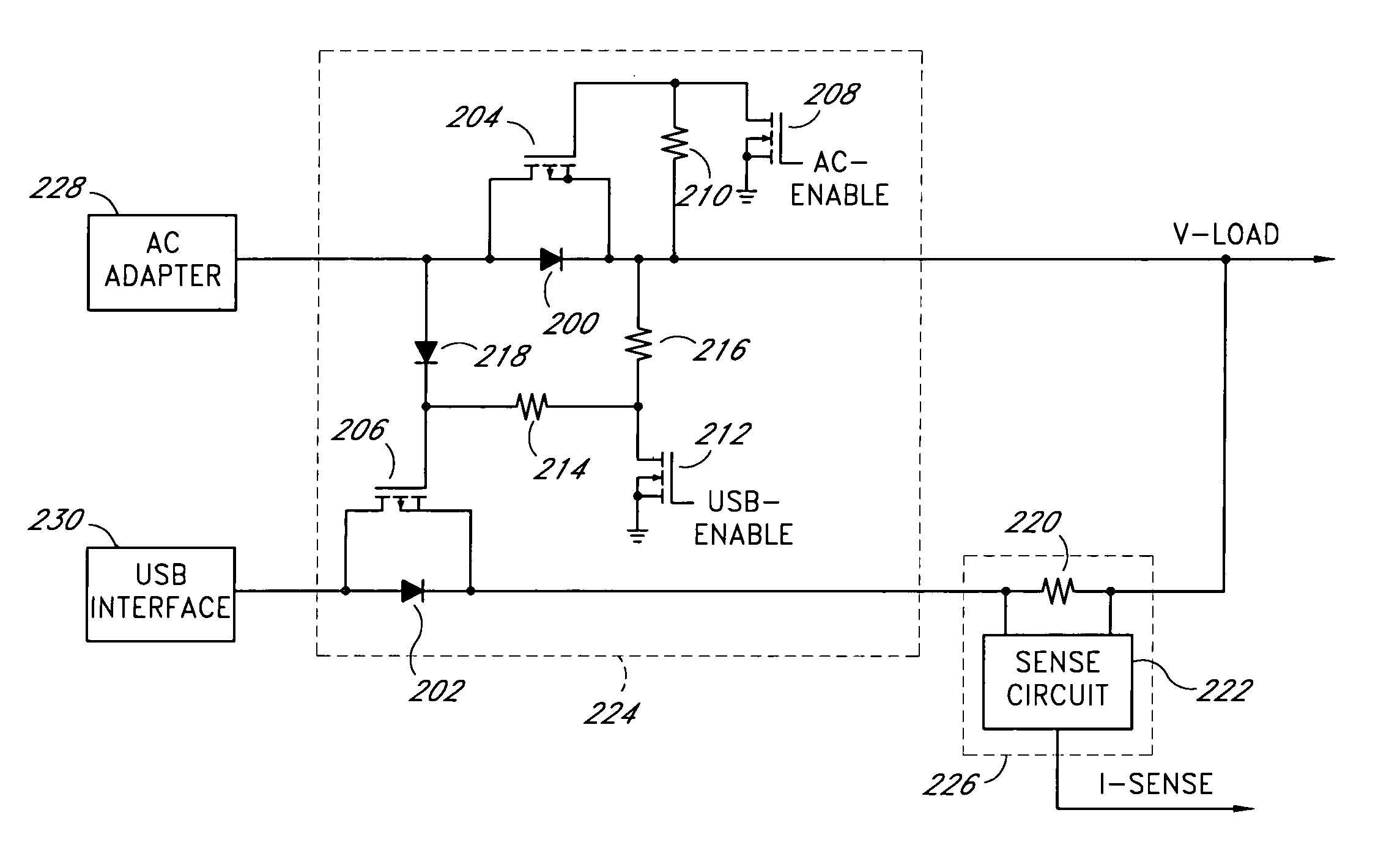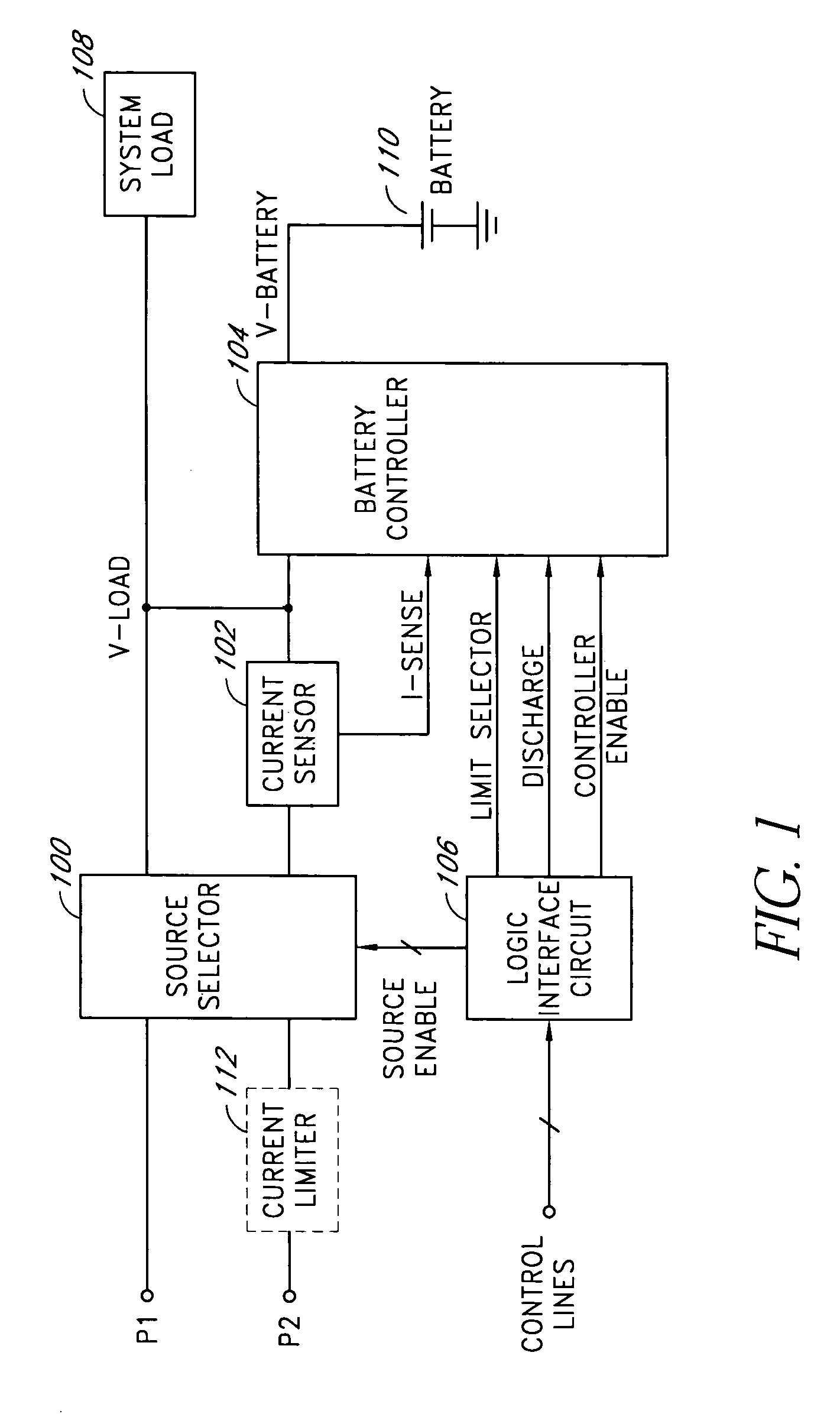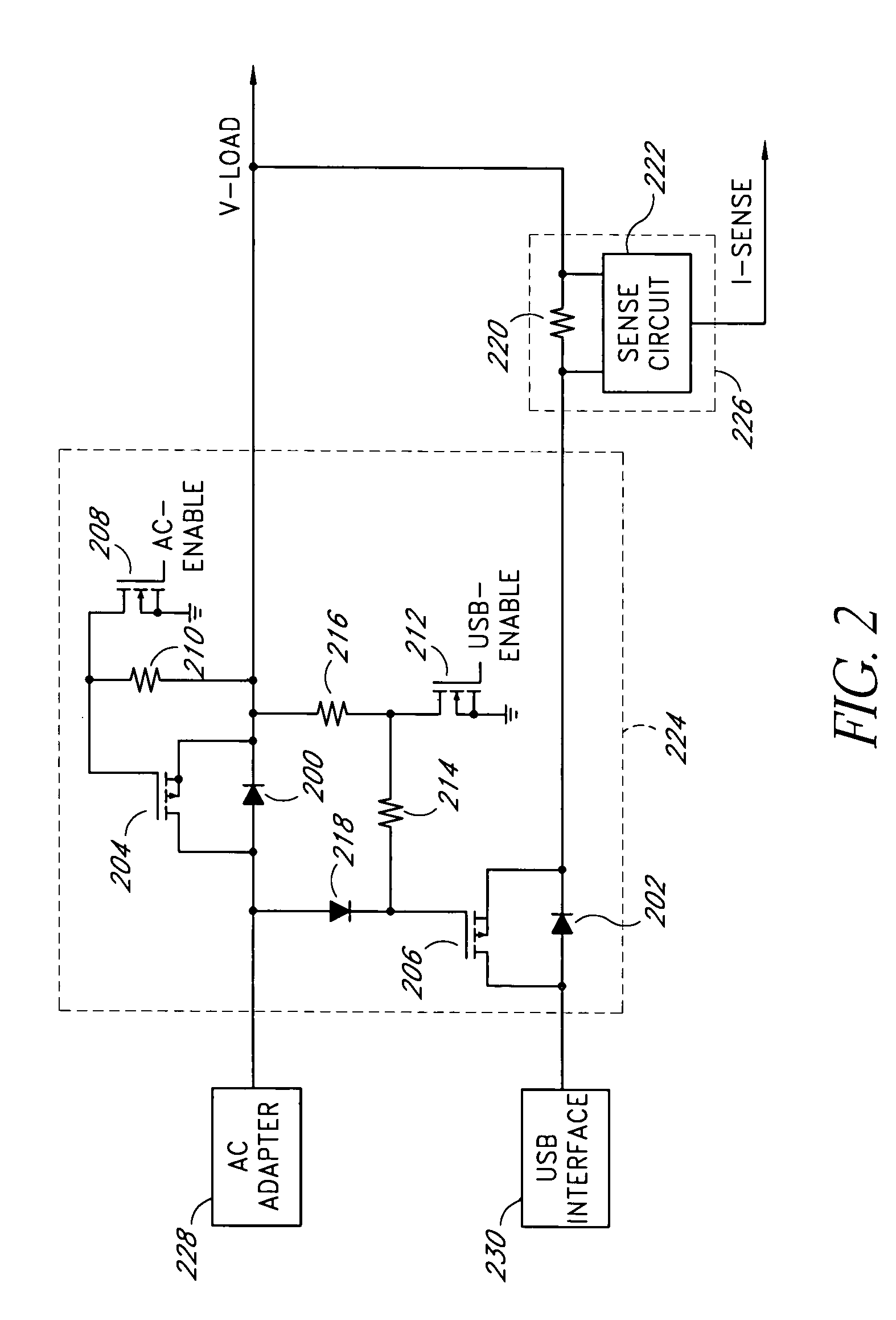Linearly regulated battery charger
a battery charger and linear regulation technology, applied in the field of battery chargers, can solve the problems of presenting unwanted load to the other power input or the battery in a discharge mod
- Summary
- Abstract
- Description
- Claims
- Application Information
AI Technical Summary
Benefits of technology
Problems solved by technology
Method used
Image
Examples
Embodiment Construction
[0029]Embodiments of the present invention will be described hereinafter with reference to the drawings. FIG. 1 illustrates a block diagram of one embodiment of a battery charger. The battery charger includes a source selector 100, a current sensor 102 and a battery controller 104. The source selector 100 selectively couples either a primary power source (P1) or a secondary power source (P2) to a system power terminal (V-LOAD). The system power terminal provides a load current to a system load 108. In one embodiment, the voltage at the system power terminal is a relatively low DC voltage (e.g., 5 volts DC) and the system load 108 is a portable electronic device (e.g., a USB device).
[0030]In one embodiment, the secondary power source (e.g., a USB power interface or port) can supply a limited amount of current and an optional current limiter 112 is inserted between the secondary power source and an input to the source selector 100 to clamp the supply current from the secondary power s...
PUM
 Login to View More
Login to View More Abstract
Description
Claims
Application Information
 Login to View More
Login to View More - R&D
- Intellectual Property
- Life Sciences
- Materials
- Tech Scout
- Unparalleled Data Quality
- Higher Quality Content
- 60% Fewer Hallucinations
Browse by: Latest US Patents, China's latest patents, Technical Efficacy Thesaurus, Application Domain, Technology Topic, Popular Technical Reports.
© 2025 PatSnap. All rights reserved.Legal|Privacy policy|Modern Slavery Act Transparency Statement|Sitemap|About US| Contact US: help@patsnap.com



